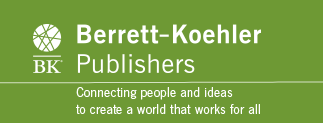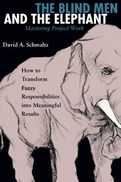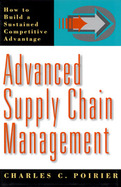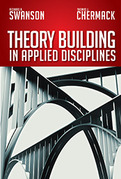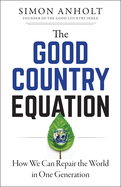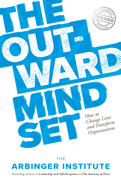- Presents a set of simple, proven techniques that all can use to increase their projects' coherence and overcome common project difficulties
- Adds the ingredient most often absent from discussions of project work-you and what you can do to influence your own experience
- The Blind Men and the Elephant is a powerful metaphor for understanding project management
Supply chain management-the means by which firms engaged in creating, distributing, and selling products can join forces to establish a supply network with an unbeatable competitive advantage-has emerged as one of the most powerful business-improvement tools around. Companies all over the world are pursuing supply chain as the latest methodology to reduce costs, increase customer satisfaction, better utilize assets, and build new revenues. In this fiercely competitive environment, the gap between firms that are succeeding and those that aren't is rapidly expanding. In Advanced Supply Chain Management, leading expert Charles Poirier presents the four levels of accomplishment that separate the successful firms from the "wannabes." He details these four levels, from the beginning stages to the most advanced techniques and processes. Each level is described in detail so a firm can calibrate itself and determine what work remains to be done to close the gap.
Many firms are stuck in the first stage of supply chain management, marked by a myopic internal focus that may result in great short-term results but often misses the mark in the increasingly important global marketplace. Poirier outlines the process by which aggressive firms graduate through the next three stages, moving from an internal focus to an external one as they partner with suppliers and customers, first to achieve savings, then to build a special advantage within a specific market.
Firms that reach the fourth stage learn how to establish the external alliances necessary to build the essential networks. Poirier provides a model for building this advanced stage, including the construction of value chain constellations that deliver benefits that elude lower-level competitors and the implementation of communications Intranets, Internets, and privileged Extranets. He also includes action studies that illustrate what has worked for companies around the world, what has not, and why.
By demonstrating how successful firms have achieved their high status and describing the process it takes to reach their level, Advanced Supply Chain Management gives readers the means to calibrate their own progress and determine a more proactive and cooperative plan for becoming the first in their industry to attain supply chain excellence.
- The recognized expert on supply chain management describes how a company can construct the value chain constellation necessary to achieve market dominance
- Explains a totally new model that builds supply chain excellence around a "nucleus organization"
- Rich in case studies that illustrate what works, what doesn't, and what the leading companies are doing to succeed
- The first multidisciplinary book specifically on building, evaluating, and developing theories in academic fields that apply research to professional practice
- Offers a five-phase model that can be used to build and test a theory in any applied discipline
- Written by two highly respected scholars
Theory matters in applied disciplines-fields that apply scholarly research to professional practice, such as management, social work, health care, human resource development, education, and many others. Because these disciplines deal with human beings in the real world, a flawed theory can result in actual harm to people and institutions.
When faced with a professional problem, practitioners resort to the latest fad or simply throw everything and anything at it because of the lack of sound theory. Scholars deal with problems by slicing them into small segments to study them but fail to address the practical implications. What's needed is a way to unite research and practice to create robust theory.
This is exactly what Richard Swanson and Thomas Chermack offer here: a complete, five-step method for developing sound, field-tested theory in applied disciplines. Unlike many existing methods, which cover only the initial conceptualization of a theory, the authors offer a complete approach, from conceptualizing a theory to creating relevant assessment criteria, establishing a research agenda to test the theory's validity, applying the theoretical concepts in the real world, and using that experience to further refine and improve the theory. The method is not restricted to any single discipline, nor is it beholden to any research ideology.
Swanson and Chermack provide a set of tools for each phase of the process, making this book accessible and applicable to a wide audience. And in addition to examples in each chapter, they offer two extended case examples of complete theory building. With flawed theories impeding the development of many applied disciplines, this book is desperately needed.
—H. E. Mohamed Abdullahi Mohamed (Farmaajo), President of the Federal Republic of Somalia
Simon Anholt has spent decades helping countries from Austria to Zambia to improve their international standing. Using colorful descriptions of his experiences—dining with Vladimir Putin at his country home, taking a group of Felipe Calderon's advisors on their first Mexico City subway ride, touring a beautiful new government hospital in Afghanistan that nobody would use because it was in Taliban-controlled territory—he tells how he began finding answers to that question.
Ultimately, Anholt hit on the Good Country Equation, a formula for encouraging international cooperation and reinventing education for a globalized era. Anholt even offers a “selfish” argument for cooperation: he shows that it generates goodwill, which in turn translates into increased trade, foreign investment, tourism, talent attraction, and even domestic electoral success. Anholt insists we can change the way countries behave and the way people are educated in a single generation—because that's all the time we have.
Hough debunks over a dozen myths about presenting to make it more fun and natural for everyone. She explains how practicing in front of a mirror makes you worse, why you should never end with questions, and much more. She includes true stories of people who not only were able to become great presenters by being “bad” but actually came to enjoy it! Like them, by following Karen Hough's wise and witty advice, you'll be able to tear up the old rules and embrace and develop your own style. You'll be freed to be a living, breathing, occasionally clumsy human being whose enthusiasm is powerful and infectious.
2019
Without even being aware of it, many of us operate from an inward mindset, a single-minded focus on our own goals and objectives. This book points out the many ways, some quite subtle and deceptive, that this mindset invites tension and conflict. But incredible things happen when people switch to an outward mindset. They intuitively understand what coworkers, colleagues, family, and friends need to be successful and happy. Their organizations thrive, and astonishingly, by focusing on others they become happier and more successful themselves! This new mindset brings about deep and far-reaching changes.
The Outward Mindset presents compelling true stories to illustrate the gaps that individuals and organizations typically experience between their actual inward mindsets and their needed outward mindsets. And it provides simple yet profound guidance and tools to help bridge this mindset gap. This new edition includes a new preface, updated case studies, and new material covering Arbinger's latest research on mindsets. In the long run, changing negative behavior without changing one's mindset doesn't last—the old behaviors always reassert themselves. But changing the mindset that causes the behavior changes everything.
